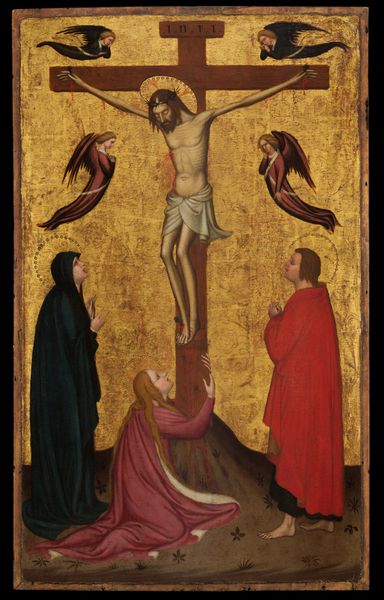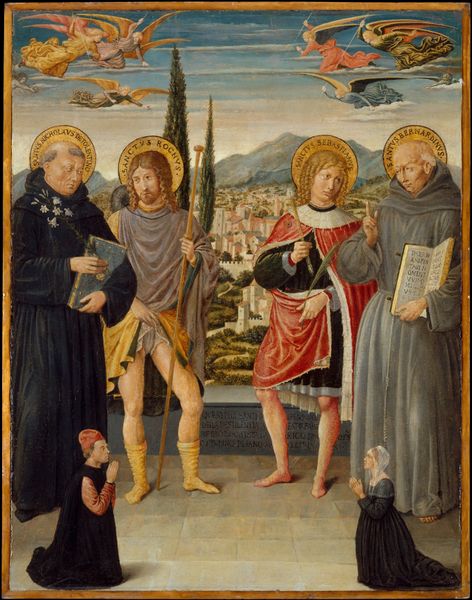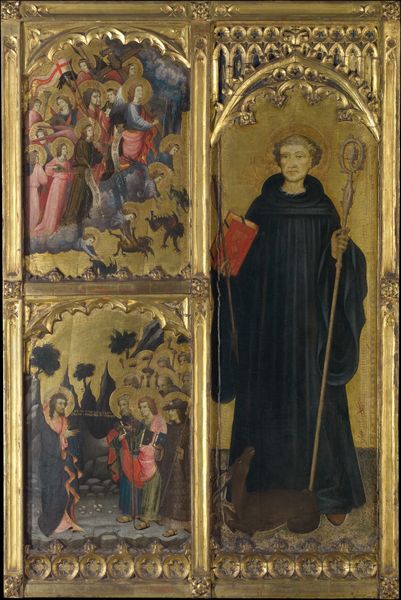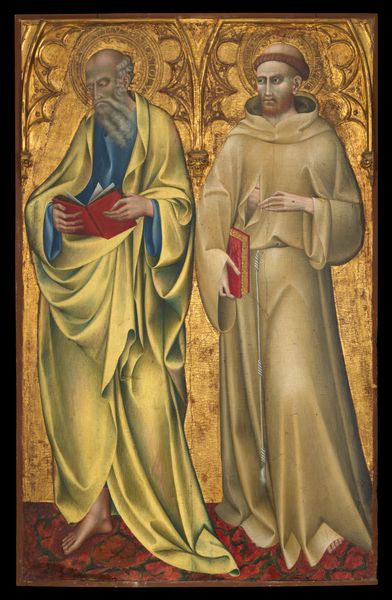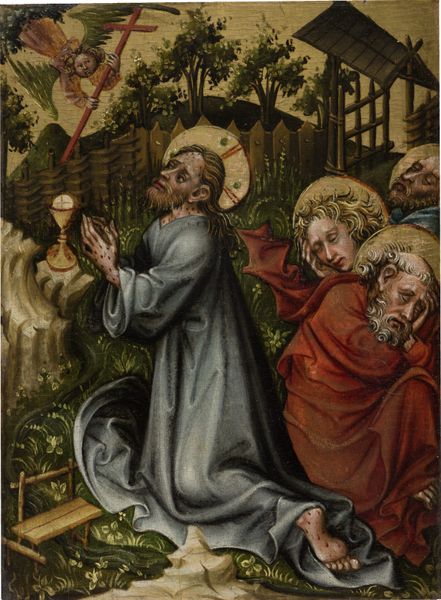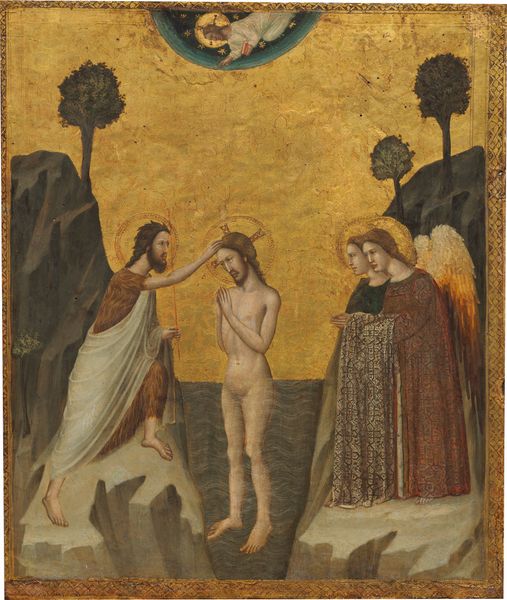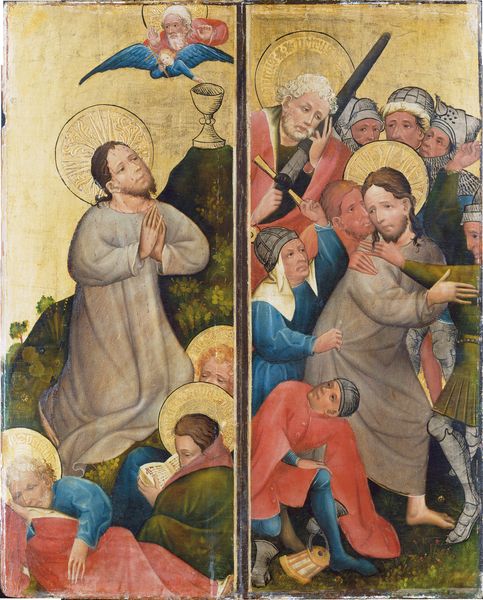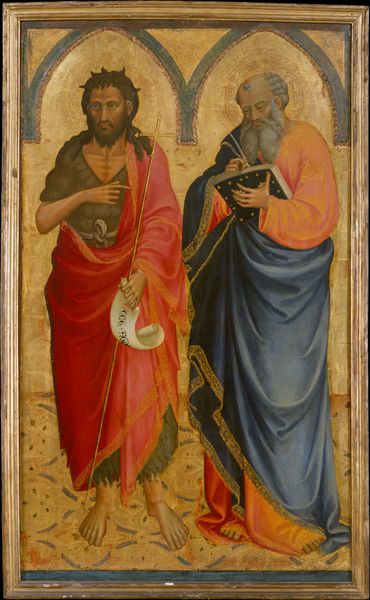
tempera, painting, fresco
#
tempera
#
painting
#
figuration
#
fresco
#
history-painting
#
early-renaissance
#
watercolor
Dimensions: Overall, with added strips at right and bottom, 36 7/8 x 34 1/4 in. (93.7 x 87 cm); painted surface 35 3/8 x 32 3/4 in. (89.9 x 83.2 cm)
Copyright: Public Domain
Editor: We’re looking at Juan de Flandes’s “Saints Michael and Francis,” made between 1505 and 1509, a tempera painting with fresco elements. The figures stand starkly against a glittering gold background. I'm immediately struck by the contrast – the angelic warrior juxtaposed with the more human saint. What strikes you when you look at this piece? Curator: That's a keen observation. The figures exist within a complex negotiation of power and piety. Early Renaissance art, particularly within the context of Spanish patronage, often served as a tool for reinforcing social hierarchies and religious doctrines. How does the visual language employed here—the composition, the subjects—participate in these dynamics? Editor: I see what you mean! Michael, with his armor and vanquished dragon, embodies divine authority, while Francis, with his stigmata, represents humble devotion. But they're placed on seemingly equal footing. It’s like the painting attempts to harmonize earthly devotion with heavenly power, but I am unsure it succeeds. Curator: Precisely! Now, consider the historical context. Spain at this time was consolidating power through religious uniformity. How might this painting, depicting both militant divine intervention and saintly suffering, serve as a visual argument for the necessity, even the beauty, of such consolidation? Think about whose stories are told, and whose are silenced or subjugated within this artistic framework. Editor: It's interesting to think about the painting as more than just a devotional piece. Seeing it in this historical context of religious consolidation, it becomes a visual representation of power dynamics. The painting does seem to support the authority of the Church and perhaps implicitly endorses certain forms of social control. Curator: Indeed. The act of interpreting any work involves this multilayered approach, connecting what is visible with the currents of power shaping its creation. Editor: I appreciate you illuminating the context of this painting, I feel I see the image anew.
Comments
No comments
Be the first to comment and join the conversation on the ultimate creative platform.

